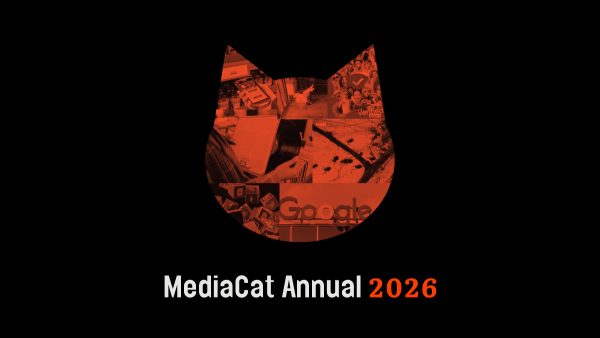The hard truth is this: AI technology is outpacing industry talent across the board. That’s not a slight against professionals or an attempt to drum up fear — it’s the reality we’re living in, and acknowledging it is the first step towards navigating this transformative era thoughtfully.
From tech developers to C-suite executives, no one is exempt. Even the AI sector struggles to keep pace with its own rapid evolution. But this doesn’t mean we’re doomed to trail behind indefinitely. It means we must adapt differently, strategically, and with a clear understanding of the landscape.
AI as a Lego set: the modular nature of innovation
At its core, AI technology operates like a sophisticated Lego set. The possibilities are endless and infinitely varied. You might:
- Build from the ground up, brick by brick
- Follow pre-designed plans
- Modify existing structures to suit your needs
- Combine multiple sets for complex solutions
… or simply enjoy the pre-built rides at the theme park.
And just like Lego, new pieces — tools, models, algorithms — are constantly being introduced in different shapes, sizes, and functionalities. This modularity is both AI’s greatest strength and its most significant challenge. It allows for immense customisation but demands a level of adaptability and foresight that many organisations are still developing.
Settling in without standing still
This rapid pace of change can feel overwhelming. The instinct to panic-buy tools or jump onto trends is understandable, especially when it feels like competitors may be outpacing you. But here’s the crucial point: you’re not falling behind because you’re slower; you’re falling behind if you’re thoughtless.
Now is the time to settle in — not to relax, but to thoughtfully assess your path forward. Rushing to implement the latest AI solution without understanding its purpose within your organisation will likely lead to wasted resources and disillusionment.
The skill disconnect: where the industry falters
As a skills provider, we see the panic firsthand. Demand for AI courses, particularly those focused on prompting, is skyrocketing. On the surface, this seems like a positive trend. Yet when you scratch beneath, many learners don’t fully understand why they need these skills or how they fit into their broader goals.
This misalignment is not just an individual problem; it’s systemic. Organisations are failing to communicate effectively about their AI strategies. Employees feel pressured to upskill, but without a clear roadmap, these efforts often lack direction and measurable outcomes. The result? Frustration, wasted investment, and reluctance to sponsor further development.
Anchoring bias: the silent saboteur
Anchoring bias — the tendency to rely too heavily on an initial piece of information — manifests in both employees and leadership. For many individuals, their anchor is ‘prompting’ because it’s their first touchpoint with AI. They don’t see the larger ecosystem or understand how their skills fit into it.
At the organisational level, the anchor often comes in the form of promises from tech vendors. A supplier guarantees that their tool will deliver specific outcomes, and leadership latches onto that assurance. However, without proper alignment and coordination, these promises rarely materialise as expected. The boat is launched, but no one is steering it effectively.
Moving from reaction to action
The fundamental problem lies in the industry’s reactive approach. Instead of thoughtfully charting a course, many organisations are chasing after shiny tools or panicking at the thought of being left behind. But trying to keep pace with AI should never be the goal.
The goal should be strategic alignment. It’s time to drop the anchor, plot your course, and begin stargazing. Here’s how:
- Create collaborative working groups: Include both leaders and employees in the same sessions. This ensures everyone understands the technology’s potential and limitations and aligns on objectives.
- Understand the core technology: Don’t just buy into the promise of a tool. Understand the fundamental principles of AI and how they relate to your business goals.
- Focus on intent before tools: Identify what you want to achieve. Only then should you select tools that align with your objectives. Remember, the right tool at the wrong time is as ineffective as the wrong tool.
- Define measurable outcomes: Success must be quantifiable. Whether it’s improved efficiency, enhanced customer engagement or increased revenue, define metrics that matter to your organisation.
Forging alignment and accountability
Organisations can shift from reactive to proactive by taking these steps. Collaborative planning will unearth gaps, clarify responsibilities, and set actionable goals. You’ll move forward at a pace that’s right for you, equipped to handle the inevitable challenges that arise.
The waves will come — AI’s rapid evolution ensures that. But with a well-charted course and a unified crew, you’ll be better prepared to navigate them. This isn’t about surviving the storm; it’s about thriving in the journey.
The future of talent in an AI-driven world
AI will continue to evolve, introducing new challenges and opportunities. The talent gap won’t close overnight, but organisations that invest in thoughtful, intentional upskilling will gain a competitive edge.
Technology alone isn’t the solution. It’s a tool — one that requires human ingenuity, collaboration and strategy to unlock its full potential. AI isn’t here to replace talent; it’s here to amplify it. But only if we learn to work with it thoughtfully.
Featured image: Google Deepmind / Unsplash






















